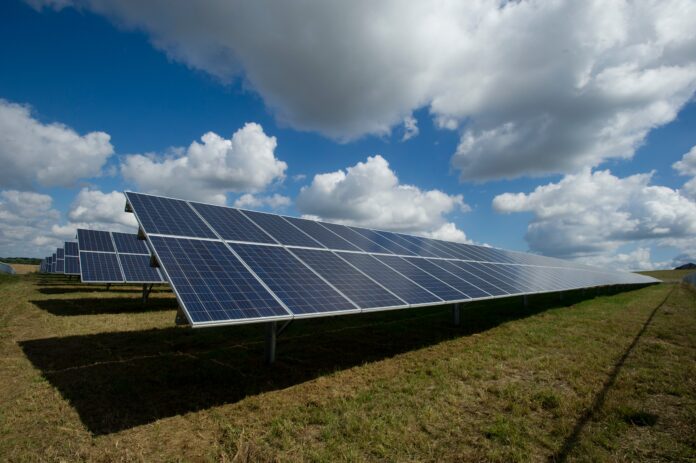The solar energy industry in South Africa has produced stellar results so far, quadrupling its output over the eight years from 2012 to 2020. Despite some hurdles along the way, the sector is still set for continued growth. The overall aim is to generate over 1,7 GW of renewable energy in South Africa by 2030.

Blessed with massive solar energy potential, particularly in the arid north western areas, the country’s solar radiation is also of high intensity. Concentrated Solar Power (CSP) is coming into the mix too which, though more technically complex, has greater ability to generate power.
As renewable energy production expands in these areas, Eskom is being pressured to increase its distribution through the country’s electricity grid. Partly for this reason, Eskom is now allowing private companies to site solar plants on land within the boundaries of its coal-fired power plants in Mpumalanga in the east.
This will help overcome grid connectivity issues because the solar energy can be fed in directly at the power station. Energy capacity is then added at minimal cost and greatest speed. This is welcome considering ongoing load-shedding. It also helps Eskom meet commitments to its Just Energy Transition of moving from coal-based to renewable energy, because job losses do not occur.
In addition, Eskom is now allowing private generators of energy to wheel electricity through the national transmission grid, meaning that a company with a solar photovoltaic (PV) system on their roof can send excess energy out through the local Eskom transmission network and into adjoining or other properties. Municipalities can also procure energy from private producers and sell it on to consumers provided it is not below Eskom’s price.
Freeing up these restrictions and allowing private electricity plants of up to 100 MW to go ahead without a generation licence, is long overdue. South African Photovoltaic Industry Association (SAPVIA) COO Nivesh Govender said: “It is vital that we encourage more participation in the sector to achieve energy security through mechanisms such as wheeling, multiple private power purchase agreements and trading, thereby creating a liberated energy system.”
Companies who use a lot of energy are taking advantage of these changes. JSE listed mining company, Sibanye-Stillwater is developing a 50MW solar energy project to power the company’s gold mining operations. More solar energy projects with a capacity of 175MW are planned to power the company’s platinum group metals operations.
Shoprite Group added 22 new solar PV sites during 2021, doubling solar capacity in its aim to power 25% of operations from renewables over the next five years. Solar PV rollout includes solar-powered refrigerated trucks and trailers. In all, new solar PV installations represent a 138% increase to nearly 30 000MWh per year.
As solar energy installations and usage rise, the cost of solar generated energy is dropping steeply in the Renewable Energy Independent Power Producer Procurement Programme. This manages the process allowing private companies to generate and sell renewable energy to Eskom. The price of solar PV electricity fed to Eskom by independent producers has fallen from an average of R3.35 per kWh in 2011, to some R0.90 per kWh, ten years later.
The Department of Mineral Resources and Energy’s Integrated Resource Plan of 2019 is guiding government initiatives up to 2030. It will require over 14 million solar panels and 3,600 wind turbines alone to implement it, according to GreenCape. As stated in their report on the South African Renewable Energy Master Plan: “This represents a significant opportunity in employment and GDP contribution through annual production across the value chain – a potential of up to R182 billion/year and 39,000 people employed in bringing 2600 MW of new capacity online each year until 2030.”
Eskom’s intention is to increase the building of transmission and distribution infrastructure to the value of more than R250bn over the next 15 years. This will give greater access to the grid for renewable energy from the outlying wind and solar energy generation areas. Eskom is seeking external finance at favourable rates for this, which would would unlock constraints on the grid and facilitate the growth of the market for new renewable energy capacity.
With the initial constraints having been overcome, and with greater support from Eskom and government departments, the future remains bright for solar energy, with the outlook better for our economy and people.
- Hugh Tyrrell is an independent sustainability consultant and writer at www.greenedge.co.za

Hugh Tyrrell is a sustainable business coach and writer at www.greenedge.co.za

